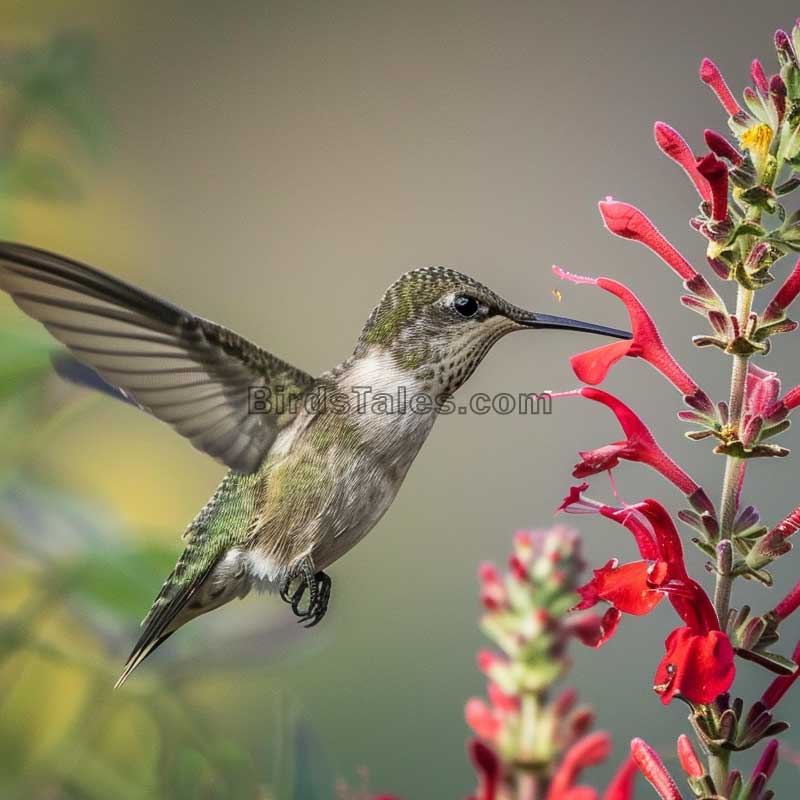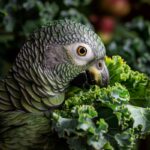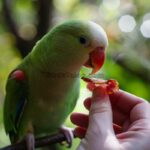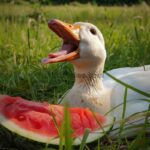Nectar: Hummingbirds’ Main Food Source
Nectar is the fuel for hummingbirds.
This sweet liquid keeps them zipping around at lightning speed.
They visit flowers and feeders to get their fill.
Without nectar, their high-speed lifestyle would grind to a halt.
Their small bodies burn energy fast, so they need to refuel often.
Think of them as tiny flying energy drink enthusiasts.
Favorite Flowers and Nectar Composition
Hummingbirds have a sweet tooth, but they’re picky about their sources.
Certain flowers are hummingbird magnets because of their bright colors and sweet nectar.
They favor:
- Red Trumpet Vine
- Bee Balm
- Columbine
- Salvia
- Fuchsia
These flowers aren’t just pretty faces.
They have deep, tubular shapes that fit the hummingbird’s bill perfectly.
The nectar inside is rich in sucrose, the sugar that powers their fast metabolism.
Hummingbirds are especially drawn to red, though they’ll visit any bright flower with the right nectar.
The sugar concentration in nectar is crucial.
Too low, and it’s like offering them watered-down soda.
Too high, and it’s a sugar rush they can’t handle.
The sweet spot is about 20-25% sugar, providing just the right boost without overloading their system.
This balance is why these specific flowers are their top picks.
Using Sugar Water Safely in Feeders
Feeders are a great way to bring hummingbirds to your yard.
Making sugar water is easy, but it must be done right to keep the birds safe.
Here’s how:
- Mix 1 part sugar with 4 parts water.
- Boil the mixture to dissolve the sugar.
- Let it cool completely before filling the feeder.
Never use honey or artificial sweeteners.
They can harm the birds.
Cleanliness is vital.
Dirty feeders can spread disease.
Clean the feeder every few days with hot water, no soap needed.
If you see mold, clean it right away.
Regular cleaning keeps the birds healthy and coming back for more.
Protein Sources: Insects and Spiders
Nectar gives hummingbirds energy, but they need protein to stay healthy.
This is where insects come in.
These tiny creatures are a vital part of the hummingbird diet, offering protein and fat.
It’s like balancing a sweet snack with a protein bar.
Types of Insects Consumed
Hummingbirds are skilled hunters despite their small size.
They feast on a variety of insects, including:
- Mosquitoes
- Gnats
- Aphids
- Spiders
These insects provide essential nutrients.
Protein helps build and repair tissues, while fat gives a long-lasting energy source.
This is especially important for growing chicks who need all the nutrition they can get.
Techniques for Capturing Insects
Hummingbirds don’t just sip nectar; they are also ace hunters.
They have several clever ways to catch their prey:
- Aerial Hawking: Hummingbirds catch insects mid-air. They zip around, snatching gnats and mosquitoes on the fly. This method is fast and efficient, perfect for their high-energy needs.
- Gleaning: This involves picking insects off leaves, flowers, or bark. They use their sharp vision to spot tiny insects hiding in plain sight.
- Plucking: Some insects get caught in spider webs or sticky sap. Hummingbirds pluck these trapped insects, turning another creature’s misfortune into their meal.
These hunting techniques ensure they get the protein they need daily.
An adult hummingbird can eat dozens of insects each day.
During migration or feeding chicks, this number can skyrocket.
By understanding these feeding habits, you can create a haven for hummingbirds.
Provide nectar and keep an eye out for their insect prey.
This balance helps these remarkable birds thrive, bringing beauty and excitement to your garden.
Supplementary Diets: Beyond Nectar and Insects
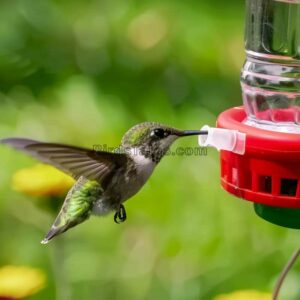
While nectar and insects make up the bulk of a hummingbird’s diet, these tiny dynamos need more to thrive.
They also nibble on other food sources to round out their nutrition.
These less common but important foods ensure they get everything they need.
Tree Sap: A Seasonal Resource
Tree sap becomes a go-to food source when flowers are scarce.
This usually happens in early spring or late fall.
Hummingbirds sip sap from holes drilled by woodpeckers, known as sap wells.
The sap is not as sweet as nectar but provides enough sucrose to keep them going.
Sap is a lifesaver when flowers aren’t blooming.
It offers a steady sugar supply, crucial for their high energy needs.
Hummingbirds are clever; they remember where the sap wells are and visit them regularly.
It’s like having a secret stash of candy bars hidden away for a rainy day.
Moreover, the sticky sap traps insects, giving hummingbirds an extra protein boost.
They pluck these trapped insects, turning the sap well into a two-for-one buffet.
This dual benefit makes tree sap an invaluable part of their diet during lean times.
Pollen: Accidental Nutrition
Pollen isn’t a primary food, but it sneaks into a hummingbird’s diet.
When they feed on nectar, pollen sticks to their tongues and bills.
Some of this pollen gets swallowed.
While it’s not a major protein source, every bit helps.
Hummingbirds don’t seek out pollen, but it adds a minor protein boost.
Less than 10% of ingested pollen is digested, but it’s still beneficial.
It’s like getting a surprise snack you didn’t plan on but enjoy anyway.
This accidental nutrition shows how every sip counts for hummingbirds.
Even while chasing their favorite sweet treats, they get a bit of everything they need.
Feeding Strategies and Challenges
Hummingbirds are always on the move, and their feeding strategies reflect this.
They must be adaptable, finding food in various ways and places.
However, these strategies come with challenges.
Adapting to Food Availability
Hummingbirds are masters of adaptation.
Their feeding habits shift with the seasons and food availability.
During blooming seasons, flowers are their main focus.
But when flowers fade, they switch to other sources like sap and insects.
These birds are also territorial.
They guard their food sources fiercely, ensuring they have enough to eat.
You might see them chasing away intruders from their favorite flowers or feeders.
It’s all about survival in their tiny, fast-paced world.
In gardens, hummingbirds look for a variety of flowers and feeders.
Planting a mix of their favorite flowers ensures they have a steady nectar supply.
Changing feeder locations can also help them find food more easily.
These small changes make a big difference.
Migration and Dietary Needs
Migration is a massive undertaking for hummingbirds.
These tiny birds travel hundreds, sometimes thousands, of miles.
To make this journey, they need extra nutrition.
Before migrating, they enter a state called hyperphagia, eating more to build up fat reserves.
They double their body weight, stocking up on energy.
Insects and nectar are both crucial during this time.
They need the quick energy from sugar and the long-lasting fuel from fat and protein.
During migration, they follow a precise route, stopping at known food sources.
These stops are like pit stops in a race, where they refuel before continuing.
Gardeners along migration paths can help by providing feeders and planting nectar-rich flowers.
Conclusion
Hummingbirds have a varied and fascinating diet.
Nectar gives them the energy to flit about, while insects provide essential protein.
They also make use of tree sap and accidentally consume pollen, showing their adaptability.
By understanding their needs, you can create a supportive environment in your garden.
Feeders, flowers, and a bit of knowledge go a long way in helping these vibrant birds thrive.
